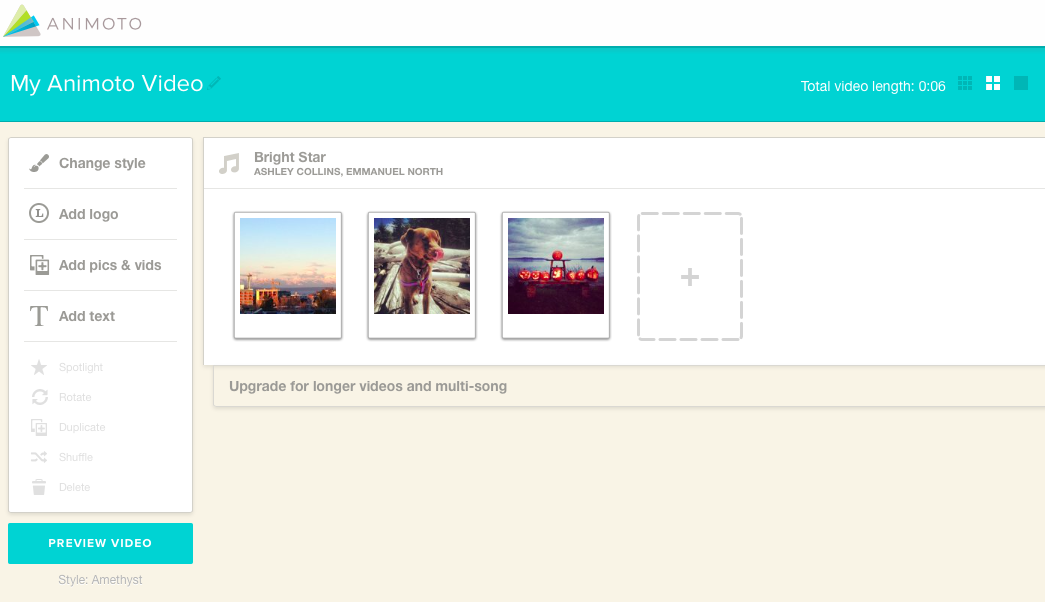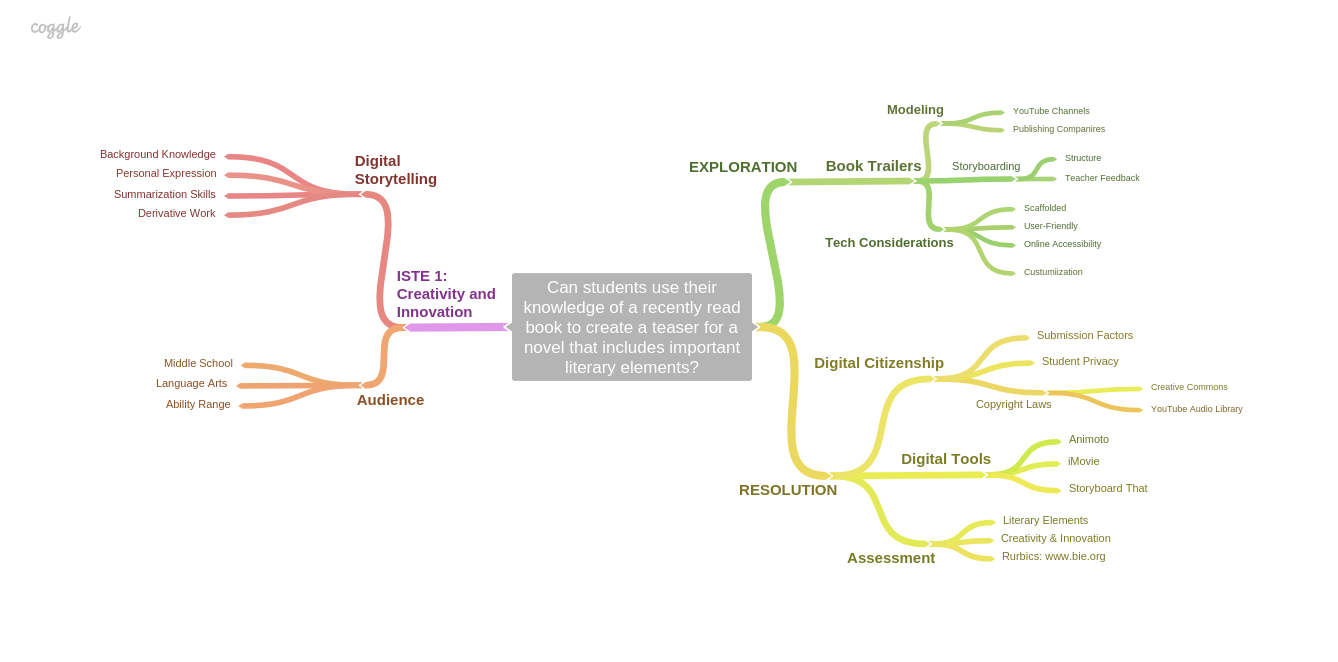The next step in my graduate coursework in Digital Education Leadership is to work my way through the ISTE (International Society for Technology in Education) Student Standards in order to implement technology for effective teaching, learning, and assessment. First, I will address ISTE 1 by focusing on how students use technology to apply existing knowledge to new ideas. One of my educational philosophies is that creativity is more effortlessly fostered when students are first equipped with basic tools in their pockets.

A student in an art class to whom a lump of clay is given can perhaps be innovative and creative in his or her manipulation. However, this same student, if provided with a background knowledge of the clay’s composition, the temperature and method of firing, and the instruments and hand techniques used to manipulate it, can use this information in conjunction with personal ideas to break new ground. In my experience, this same principle applies to educational technology. Unfortunately, I have often found that students who are given free choice often gravitate towards the same tools they have used before. Perhaps, front loading instruction around certain tools can prepare students for experimentation and innovation later. With this as an important consideration in mind, I posed the following question:
“How can students use their knowledge of a recently read book to create a teaser for this novel? What tools would allow students to both engage a potential new reader and share important literary elements of the story (such as tone, theme, characterization, setting, etc.) in a structured but creative way?”
Forever on a quest to engage new readers, I hope to provide opportunities for my middle school language arts students to work with texts in an engaging, yet still structured way. While I have always required outside reading from students, I am averse to traditional book reports, perhaps due to my own hatred of reading as adolescent. I attempt to avoid such a fate for my own students. Student choice in book selection is an easy first step in encouraging reading for pleasure. The second step is implementing technology effectively.
Book trailer production, a form of digital storytelling, rose to the top of my research as I sought answers. In “Digital storytelling: A powerful technology tool for the 21st century classroom” Bernard R. Robin describes that digital storytelling, “allows computer users to become creative storytellers through the traditional processes of selecting a topic, conducting some research, writing a script, and developing an interesting story” (2008, p. 222). Students are asked to take their existing knowledge of a book and reformat it in a way that excites a new reader and relays important elements of literature in a coherent way, all while allowing for personal expression.
Denise Davila addresses this idea in 2010 by highlighting the power behind student remixing of information. She writes, “Digitally enabled youth are using multimodal Internet tools to interact with books in ways that did not exist even ten years ago. In addition to viewing promotional trailers, they are engaging in activities such as directing, producing, and sharing their own fan-made book videos; creating soundtracks for books; writing book reviews; communicating with authors via websites and blogs; participating in social network book clubs; and publishing fanfiction that expands their favorite books” (2010, p. 41). Her suggestion that students are already engaging in this type of derivative work online further highlights the necessity of incorporating it into the classroom.
What tools should I use?
A plethora of online tools exist for a project like this, however two particular tools stood out among the rest: Animoto and iMovie. These resources appear to fulfill the needs of a dynamic production, have an appropriate level of difficulty for middle school students, and are engaging. iMovie for Mac provides a lot of flexibility and customization options. However, it requires a fair amount of time, patience and skill to use effectively. Alternatively, the iMovie for iOS (mobile devices such as iPads and iPhones) is much more user-friendly and would be more appropriate for a beginner. The app even has a “trailer” option, with templates available for selection. It provides a scaffolded process for students to create an outline and storyboard as they work. Animoto is another worthwhile online tool to investigate, as it also utilizes video, images and sound to create a trailer. I recommend checking out Animoto’s own blog post about using their tool for book trailer assignments. I plan to investigate these tools further with students so that I can report back my findings.


Where should I start?
First and foremost, I would start by showing examples of popular book trailers to students, using YouTube channels such as The Children’s Book Council’s YA Book Trailers. This will highlight effective construction, as well as excite. Naomi Bates’ 2012 article, “Weaving a virtual story: creating book trailers 101,” astutely organizes helpful steps in the process, noting that, “A useful technique is making notes before starting a trailer. This preparation gives a sense of direction for the trailer—a purpose. Finding images and music will take the most amount of time, but without notes, it’ll take even longer” (p.74). While creativity is an important element of such a project, the need to scaffold the larger project is key. The use of storyboarding provides this structure. Middle school students struggle with the concept of summarization alone, often retelling and including too many minor details. Lessons on storyboarding and built in time for teacher feedback at this stage will guide students and prevent issues later. An online tool called Storyboard That, although not a free service, could be a neat alternative to a paper worksheet.
Additional Considerations
The feedback I received from my professors and cohort about my research led to most of the considerations that follow. Addressing copyright laws is an important digital citizenship piece. Middle school students need to be pointed in the direction of resources such as creative commons images and sound. Naomi Bates highlights some useful sources and tips in her 2012 article, although a simple place to start is the Creative Commons Search tool. Additionally, privacy concerns are a key piece of teaching digital citizenship. I would want to prevent my students from uploading personal projects into public spaces. Front loading instruction with these considerations, as well as best submission practices (file size, location, etc.), is a smart way to prevent educator frustration later.
Finally, developing an appropriate rubric for assessment is crucial. Designing a rubric for a technology project that allows for creativity, but focuses on key skills, such as elements of literature, such as theme, tone, and characterization, is a next step in my research. I have found that rubrics can at times overwhelm middle school students, resulting in avoidance. I was clued into a resource by my professor (bie.org) that provides great criterion for assessing innovation, and this might be a good place to head next!

Tools: Animoto, iMovie, Storyboard That, Creative Commons Search
YouTube: The Children’s Book Council’s YA Book Trailers
Articles:
Bates, N. (2012). Weaving a virtual story — creating book trailers 101. Knowledge Quest,40(3), 72–76.
Davila, D. (2010). Not so innocent: book trailers as promotional text and anticipatory stories. The ALAN Review,
38(1).
DeSantis, B. (2013) A twist on the school book report. Retrieved from
https://animoto.com/blog/education/book-trailer-videos/.
Robin, B. R. (2008). Digital storytelling: A powerful technology toll for the 21st century. Theory into Practice,
47(3), 220–228.
Wow, Annie, color me impressed! Your blog itself is so clean and professional looking, it is enjoyable to peruse. I could hire you to improve the look of my blog! In regards to the post, I really appreciated the way you painted such a clear picture in my head and made me want to keep reading, such a great way to draw readers in. I really enjoyed the layout of your post, it was so easy for me to read and absorb, I like how you break it down in simple, manageable steps for fellow teachers. It is a great overview to using book trailers to support the teaching of literary elements, based on research and pedagogy. Great job!
Great blog post, Annie! I appreciated the way you formatted the post for an audience of teachers. Your post is easy to digest with action steps to help another teach implement some of the ideas you have.
You’ve done a great job, Annie, of explaining your purpose for helping students become familiar with specific digital storytelling tools, and I would love to read any additional blog posts you may add on what tools you find work well in your setting. You’ve done a nice job, too, of taking into consideration digital citizenship issues and assessment of student work. Finding a balance between creating structure and providing space for creative expression can sometimes be a challenge. Thank you for sharing your insights.